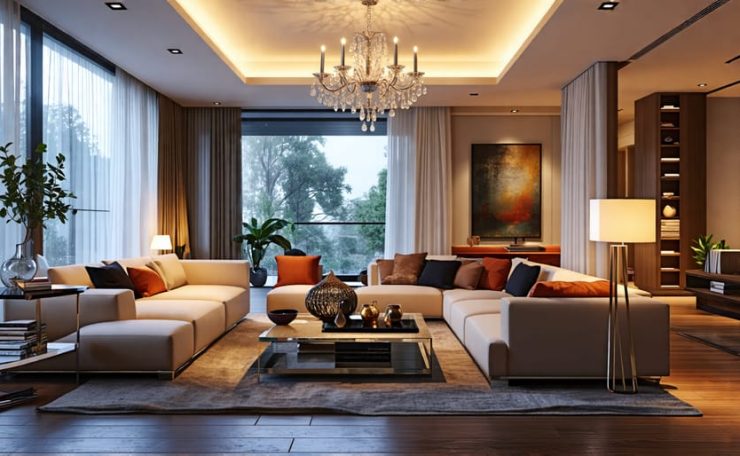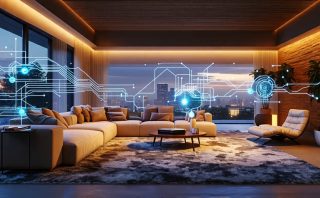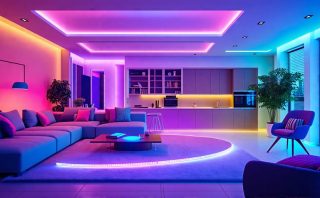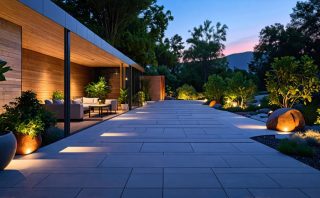Select the right light fixtures by assessing the purpose of each space and the mood you intend to create. Layer different types of lighting—ambient, task, and accent—to achieve both functionality and aesthetic appeal. Adjust the color temperature of bulbs to complement your room’s decor: use warm tones for cozy settings and cooler tones for modern, dynamic environments. Incorporate dimmer switches to regulate light intensity, offering versatility in ambiance and energy efficiency. Experiment with light placement to highlight architectural features or artwork, adding depth and focus to the area.
Understanding the Basics
Types of Lighting: Ambient, Task, and Accent
Lighting design is fundamental in creating functional and aesthetically pleasing spaces, with three primary types to consider: ambient, task, and accent lighting. Ambient lighting, often referred to as general lighting, serves as the main source of light for a room, providing uniform illumination that enables one to move and see comfortably. This can be achieved through ceiling-mounted fixtures, chandeliers, or wall sconces. Task lighting is more focused and is used to illuminate specific activities such as reading, cooking, or working at a desk. It typically involves the use of desk lamps, under-cabinet lights, or pendant lights. Meanwhile, accent lighting is employed to highlight particular features within a space, such as artwork, architectural details, or unique design elements. A well-planned lighting design integrates these types to enhance usability and create atmosphere. For those looking to extend lighting creativity outdoors, don’t forget to light up your landscaping to add depth and beauty to exterior spaces.
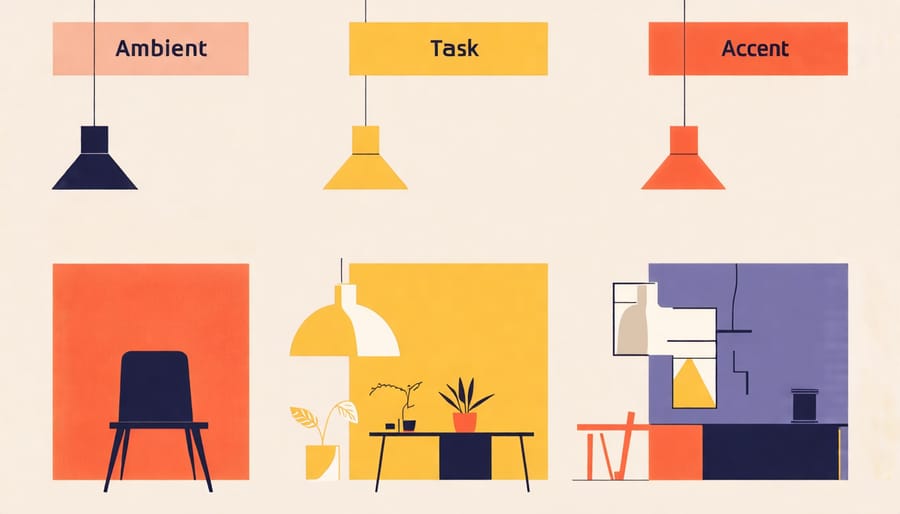
The Principles of Layered Lighting
Layered lighting is a crucial principle in lighting design, using a harmonious blend of ambient, task, and accent lighting to enhance space and create desired moods. Ambient lighting, often the foundational layer, provides general illumination that fills most of a room. Task lighting, on the other hand, is strategically placed to perform specific functions; think of reading lamps or under-cabinet lights in kitchens. Lastly, accent lighting adds depth and focus by highlighting architectural details or artwork, often using spotlights or track lighting. Combining these layers allows for a versatile and dynamic lighting scheme, enabling you to tailor your environment to suit different activities or atmospheres. For homeowners and professionals alike, understanding how to orchestrate these various elements can transform any space, making it more inviting and functional. Personal consultations with lighting experts can further refine these designs, ensuring that your lighting choices perfectly align with both aesthetic aspirations and practical needs.
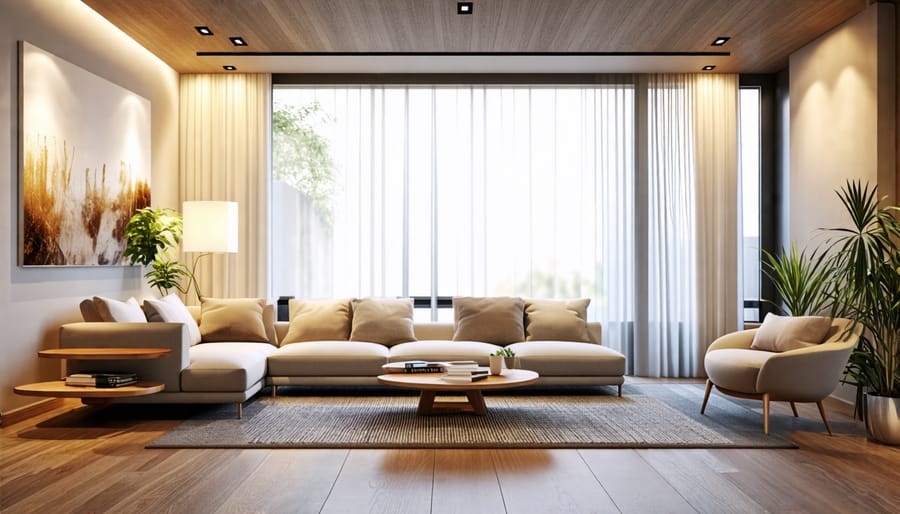
Lighting Design Techniques
Creating Focal Points with Light
Using lighting to create focal points in a room is a powerful technique for highlighting specific areas or features, enhancing both aesthetics and functionality. To achieve this, consider employing accent lighting, which is designed to draw attention to a particular object or architectural element. For instance, a spotlight or track light can be directed towards a piece of art, a textured wall, or a plant, instantly elevating its visual prominence.
Another method is layering lights, combining ambient, task, and accent lighting to develop depth and focus. Dimmers can further refine focal points by adjusting light intensity to suit different moods or times of the day. Consider using LED strip lights under shelves or cabinets to subtly emphasize lines and create visual interest. Proper placement and choice of fixtures can transform ordinary spaces into captivating environments, making them not only functional but also intriguing. Always tailor lighting solutions to the room’s purpose, embracing creativity while ensuring utility and comfort are not compromised.
Setting the Mood: Using Color and Intensity
When designing the lighting for a space, understanding how color and intensity influence the atmosphere can transform any room. The color of light, often measured by its temperature in Kelvin, sets the tone—from warm and inviting to cool and energizing. A warm white light, resembling the golden hues of a cozy sunset, is perfect for living rooms or bedrooms, encouraging relaxation. On the other hand, cooler white lights, which mimic daylight, invigorate and are ideal for workspaces or kitchens. Choosing the perfect light bulb color involves considering the purpose of the room and the mood you wish to evoke.
Equally important is the intensity of the light. Brighter lights can energize a space, enhancing concentration, whereas dimmer lights create a soothing environment, reducing stress and promoting comfort. Using dimmers can offer flexibility, allowing you to adjust light levels according to your needs, thereby enhancing the functionality and feel of a room. Thoughtful lighting design harmonizes these elements, crafting an ambiance that complements your intentions and elevates your space.
Smart Lighting Solutions
Smart lighting technology offers transformative benefits for enhancing lighting design and functionality in any setting. By integrating cutting-edge smart lighting solutions, users gain unparalleled control over ambiance with features like adjustable color temperatures and programmable schedules. These systems not only promote energy efficiency through automation and remote access but also support personalized lighting profiles tailored to specific needs. For homeowners, this means creating mood-perfect environments, while for commercial spaces, it aids in optimizing costs and functionality. Ultimately, smart lighting combines innovative technology with practical design, catering to diverse requirements efficiently and stylishly.
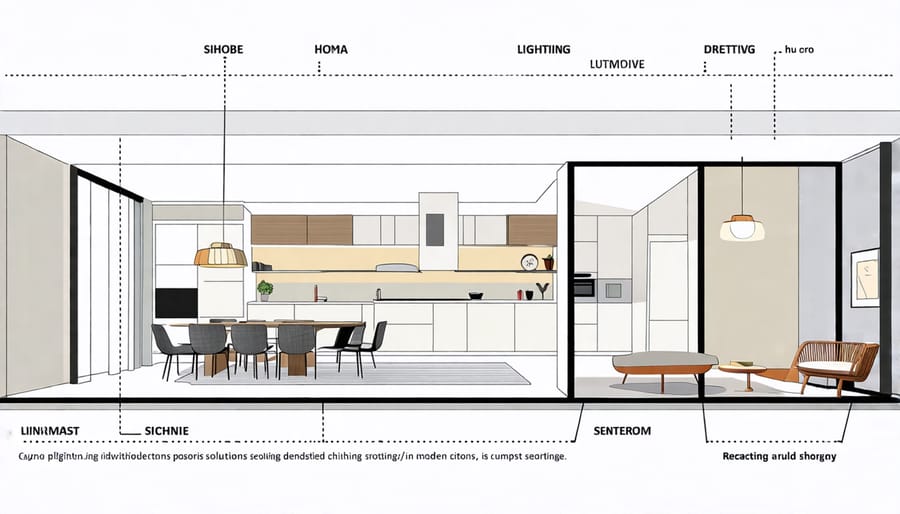
Common Mistakes and How to Avoid Them
Overlooking Functionality
Balancing aesthetics with functionality is critical in lighting design. While the visual appeal of lighting can dramatically transform a space, it should never come at the expense of practicality. For homeowners, architects, and interior designers, it is essential to consider both how lighting will enhance the beauty of a room and its ability to effectively illuminate. Begin by identifying the primary purpose of each space—whether it’s for relaxation, productivity, or entertainment—and tailor your lighting choices accordingly.
Use ambient lighting to establish an inviting atmosphere, while task lighting is essential for specific activities, such as reading or cooking. Accent lighting can be strategically employed to highlight architectural features or artworks, adding depth without overshadowing functionality. Consultations with lighting experts can provide tailored solutions that marry elegance with efficiency, ensuring your designs are both stunning and sensible. By prioritizing both form and function, you can achieve a harmonious balance that elevates any environment, meeting the dual demands of aesthetics and utility.
Misjudging Scale and Proportion
Accurately scaling lighting fixtures to the size of the space is crucial for achieving a harmonious design that enhances both function and aesthetics. To properly judge scale and proportion, start by assessing the room’s dimensions, taking into account both ceiling height and floor area. A good rule of thumb is to add the room’s width and length in feet; the sum, converted to inches, suggests an ideal diameter for a central fixture. For example, a room that is 12 feet by 10 feet could accommodate a fixture approximately 22 inches in diameter.
Consider the function of the space when selecting fixture size. Larger fixtures make bold statements in areas like dining rooms and entryways, while more modest lights work well in intimate settings or as task lighting. Balance is key; an oversized light might overwhelm a small room, while a tiny fixture may get lost in a larger one. Aim for cohesion by integrating lighting with existing furniture and décor, ensuring all elements complement each other. Personalized consultations can further refine your choices, providing tailored solutions to meet your specific lighting needs.
Personalized Lighting Design Solutions
Consultation and Customization
Navigating the nuances of lighting design can be greatly enhanced through personalized consultations. By engaging with lighting professionals, homeowners, interior designers, architects, event planners, and business owners can understand how tailored lighting solutions best fit their unique environments. A customized approach considers each space’s function, style, and architectural details, ensuring optimal lighting performance and aesthetic appeal. During a consultation, experts assess factors such as natural light availability, room dimensions, and existing décor elements, guiding clients in choosing fixtures and placements that harmonize with their specific needs. This personalized service also offers valuable product comparisons, helping clients select the right technologies and styles to enhance both ambiance and efficiency. By prioritizing individual requirements and preferences, a bespoke lighting plan not only meets practical lighting needs but also elevates the overall design coherence. Ultimately, these expert consultations translate foundational lighting principles into actionable insights, crafting environments that are both beautifully and functionally illuminated.
Navigating Product Choices
Selecting the right lighting products involves evaluating key features such as brightness, energy efficiency, and design compatibility with your space. For instance, when considering under cabinet lighting, pay attention to factors like light output and installation ease. LED lights generally offer remarkable energy savings and long lifespan, making them a favorable choice for many applications. Consider the color temperature too, as it immensely impacts mood and functionality; warmer tones create a cozy atmosphere, while cooler tones enhance focus. Dimmers provide flexibility, allowing you to adjust light levels according to different times and needs. Compare products across brands to identify those offering superior value in terms of warranty and customer support. Conduct personalized consultations with experts to assess your specific lighting needs, ensuring a tailored solution. By focusing on these aspects, homeowners and professionals alike can make informed decisions, creating well-lit environments that balance aesthetics with practicality.
Conclusion: Transforming Spaces with Light
In conclusion, transforming spaces with light involves more than just choosing fixtures and bulbs—it’s about creating an atmosphere that reflects your style and meets the functional needs of the space. Thoughtful lighting design can significantly enhance the aesthetic appeal and usability of any environment, whether it’s a cozy home, a chic office, or a grand event venue. By understanding the basic principles and techniques of lighting design, you can make informed decisions that elevate your spaces. However, for optimal results and to truly bring your vision to life, consider consulting with a professional. They can offer personalized guidance, detailed product comparisons, and tailored lighting solutions that align with both design aspirations and practical requirements. Investing in expert advice ensures that your lighting not only complements your space but also maximizes its potential, making a lasting impact on both functionality and ambiance.

